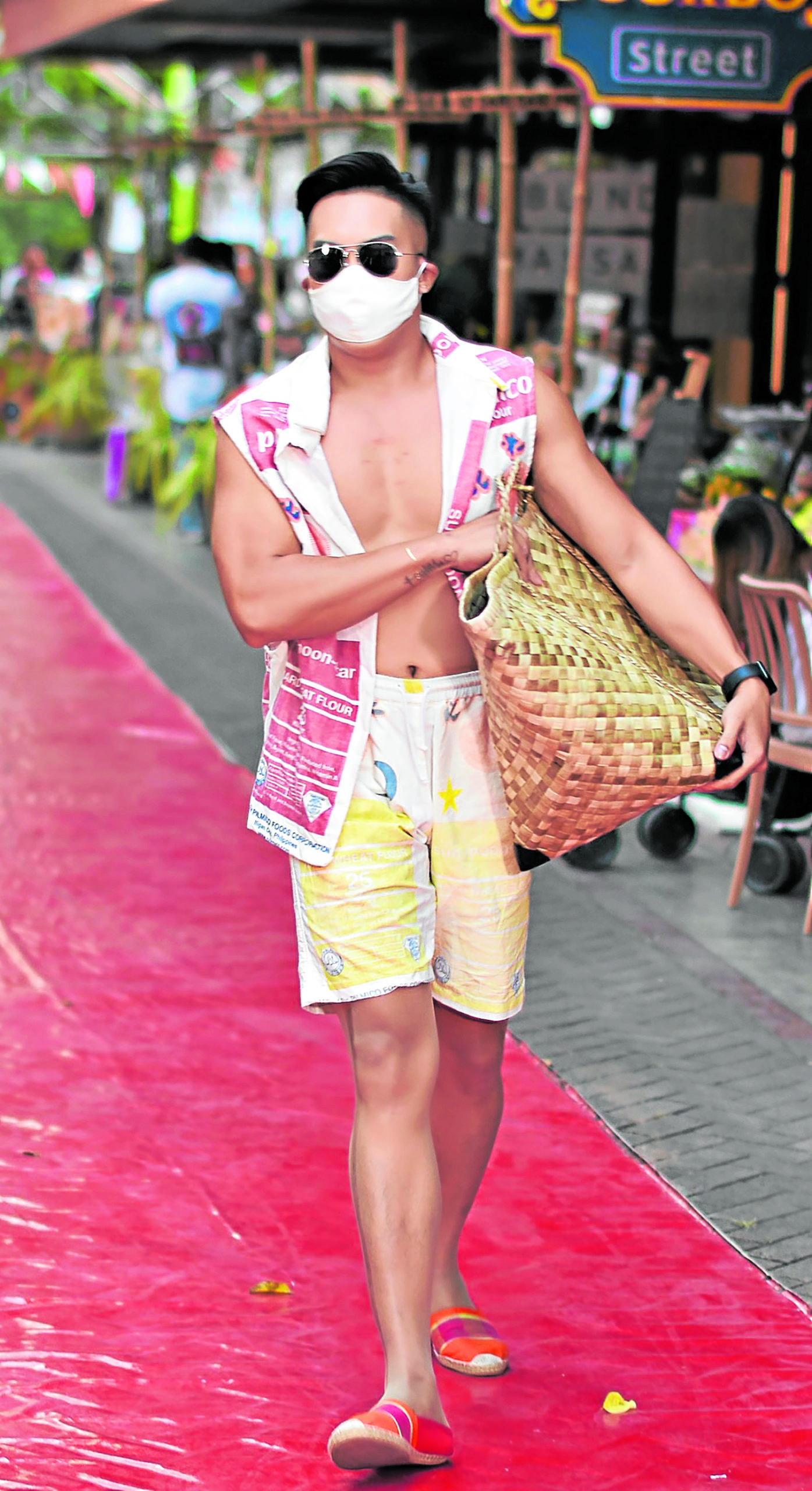
Muslin, katsa in Tagalog, the plain weave cotton fabric, is having its moment. Ilonggo designer Percy J. (PJ) Arañador has been upcycling flour sacks into resort wear with hand-painted cultural icons from his province.
He recalls that during the first lockdown in March 2020, bakeries in Iloilo donated flour sacks as materials for face masks. This kicked off his advocacy in upcycling, reusing a material in a creative way to minimize waste.
This resourceful endeavor can be seen at La Tienda Probinsiya, a biweekly marketplace to support the farmers’ cooperative, Panay Organic Producers Association. It is held at The Avenue, an outdoor events place in Smallville, Iloilo.
“The purpose is to restart the economy after these lockdowns. The event has food, seedlings, crafts, slow fashion and services such as massages by the blind,” says Arañador.
The upcycled flour sack collection carries the theme “from farm to fashion.” Using acrylic paint, Arañador renders images of pride in the agriculture lifestyle such as a farmer sitting on the carabao with the graphics “My boyfriend is a farmer” in Ilonggo. Then there are images of farm animals such as the geese, pig, goat, rooster and carabao.
The heritage images depict Molo Church, Lopez Mansion, Art Deco Municipal Hall of Jaro, Sason Antillan Ancestral Home, Molo Mansion and Campanario de Cathedral Tower.
He also replicates costumes from the paintings of Damian Domingo, dubbed the Father of Philippine Painting, and authenticates the hand-painted images with his signature.
The flour sacks are very sturdy since they carry an average of 23 kg, says the designer. The sacks are soaked, handwashed several times, cut into easy-fitting patterns and piped with local handwoven prints.
Arañador has been designing muslin summer staples since the ’80s. When he set up his lifestyle store, Nautilus, in Boracay, foreign tourists snapped up the muslin sarongs and roomy drawstring pants and shorts.
Loose-fitting bottoms
That same consumer preference is evident in the sales of the 2021 flour sack collection. Loose, knee-length shorts called the puruntong, boxers and pajama pants, hand-painted with costumes and cultural landmarks, have been the most popular.
The making of loose-fitting bottoms was inspired by the elderly women in the Visayas, whose daily attire was the patadyong, a printed wraparound tube. They eschewed underwear in order to reduce odor, discomfort and irritation. In Arañador’s trips to India, naturopaths recommended loose trousers to avoid rashes around the groin and fungal infections.
“Upcycled clothes will be big,” he says. “You can mix the casual with the formal or the mundane with the sophisticated.”
The clothes are available via his Facebook (Nautilus PJ Arañador) and his physical store, Nautilus in Jaro. He notes that people have been buying the upcycled sack collection to support sustainable fashion. They value clothes made of organic material that has been repurposed from deadstock fabric. There is zero wastage of material in the process.
“The scraps are made into other products such as door mats, knots, patches, quilts, embellishments and cushion stuffing,” he says.
People are also buying the collection to help the sewers, who are marginalized women and former scavengers, enlisted in a community livelihood program.
“In this era of frugal fashion, upcycled fashion is appropriate because it is affordable,” says Arañador. The hand-painted clothes range from P375 to P595 while the basic flour sack clothes cost P274 to P450.
“The magic is in the katsa. A bag is a bag, but the material is what makes it charming. That’s what customers like,” he says.
—CONTRIBUTED